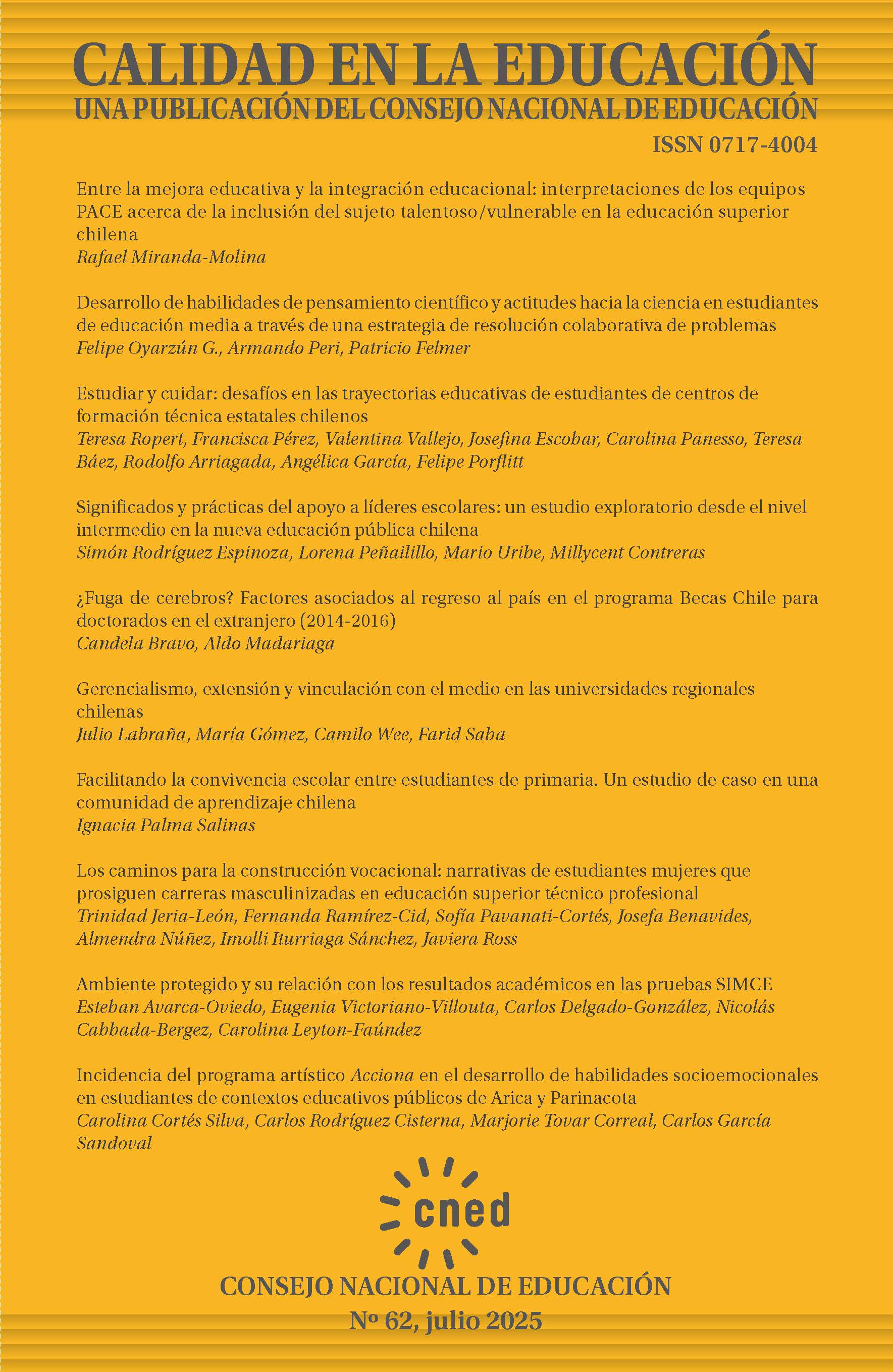Pathways to Vocational Construction: Narratives of Female Students Pursuing Male-Dominated Careers in Technical and Vocational Education and Training
DOI:
https://doi.org/10.31619/caledu.n62.1603Keywords:
Life Course, Vocational Decisions, Technical and Vocational Education, Gender RolesAbstract
This study aimed to analyze the process of constructing vocational decisions among 15 female students enrolled in male-dominated programs within Technical and Vocational Education and Training (TVET), across their life course. Through interviews, the presence of significant actors—such as family members, friends, teachers, and internship supervisors—was identified. These actors either facilitated and/or challenged the interests expressed by the students throughout different life stages. The study also identified the strong sense of agency that the interviewees themselves attribute to their own process of vocational construction and choice. Finally, the findings show how gender roles appear in the students' life narratives not only in the socialization spaces in which they engage, but also in their own exploration, articulation, and decision to pursue vocational interests in traditionally male-dominated fields.
Downloads
Published
Issue
Section
License

This work is licensed under a Creative Commons Attribution 4.0 International License.
Authors retain their Copyright and only transfer a part of these to the journal, accepting the following conditions:
Authors keep their rights as authors and guarantee the right to the journal for the first publication of their work, which is simultaneously subject to the Creative Commons Attribution license allowing third parties to share the study accrediting the author and first publication in this journal.
Authors may adopt other non-exclusive license agreements for distribution of the version of the published work (e.g. inclusion in an institutional thematic file or publication in a monographic volume) accrediting initial publication in this journal.
Authors are allowed and recommended to share their work over the Internet (e.g. in institutional telematic files or their website) before and during the submission process, which may lead to interesting exchanges and increased citation of the published work. (See The effect of open access).

